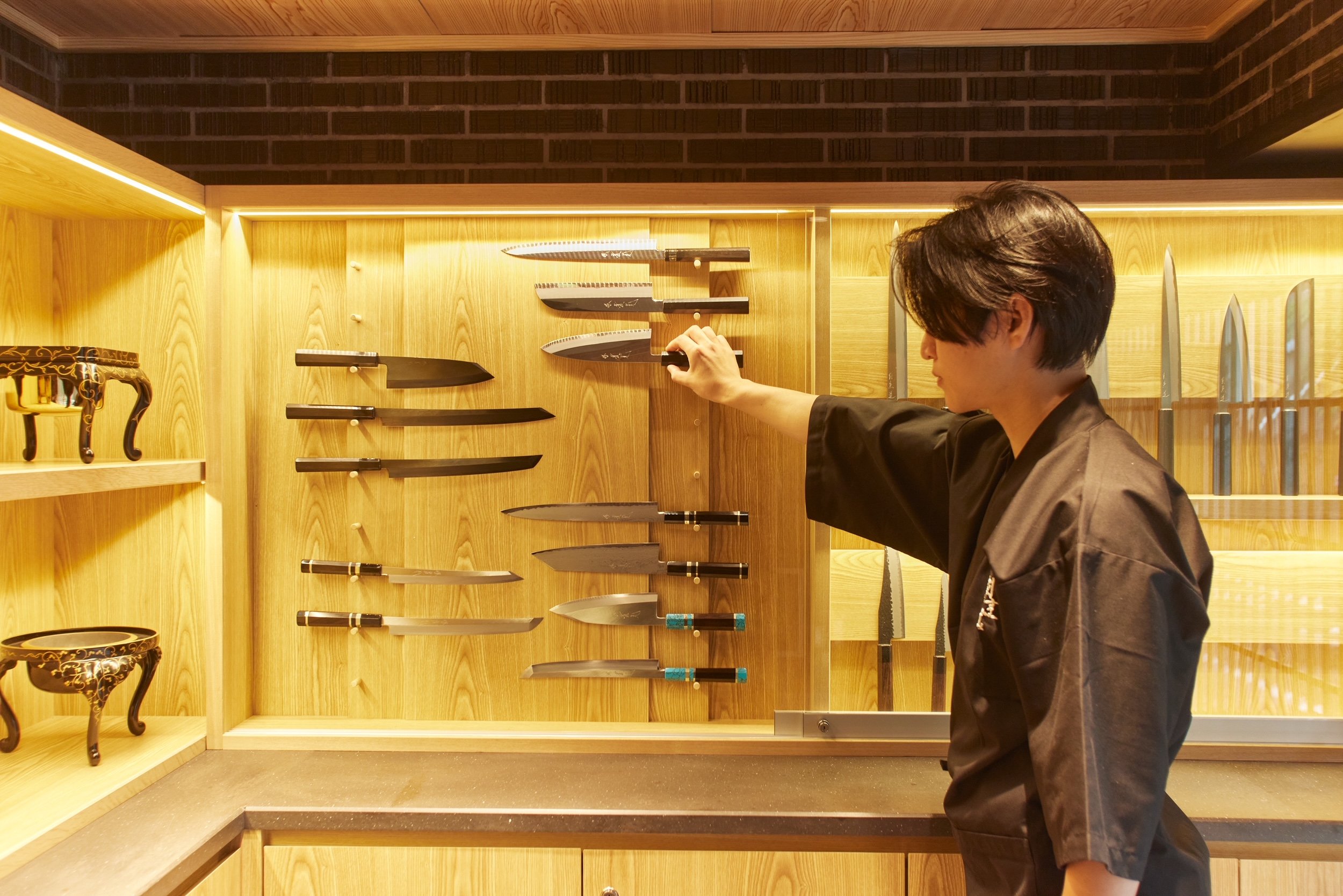
Explore the rich history of Japanese knives
What makes Japanese knives special
The value and significance of Japanese cuisine is expressed through the way its tools are used. The handcrafted knife in particular is essential to Japanese foods and plays a pivotal role, as even the seemingly simple act of cutting fish is a delicate process. As such, possessing the right knife is instrumental in mastering Japanese cooking and its wide range of styles.
What makes each knife different
Each Japanese knife serves a distinct purpose, crucial for mastering the art of Japanese cooking. From the precision and long blade of the Yanagiba for delicate sashimi slices to the versatility of the Santoku for chopping vegetables, each blade embodies centuries of culinary tradition and dedication to the art of handcrafted knives. Click the "Learn More" button to help you select the blade that best fits your lifestyle.

“Me and my friend bought several true Japanese knives here. Highly recommend this place if you need a true piece of Japan to bring back home!”
—Past Reviews
Handle Types
When purchasing a Knife, understanding the type of handle is as equally important in the process as the blade itself. When buying a knife, there are two distinct knife types, categorized by their Western and Eastern influence.
-
Yo’ handles are known for being embedded into the blade and as such can not be replaced.
Yo’ handles are also heavier and have a greater distribution of weight due to the handle being made of plastic or metal.
-
Wa’ handles on the other hand are interchangeable by nature when the handle is damaged, as such having a longer lifespan. This distinct feature of Japanese knives is what sets it apart from the rest of the world.
Another thing to consider is the weight difference between the two handles, as the Wo’ handle is the opposite, as the handle is made of weight, putting greater weight onto the front of the knife and overall making the knife lighter necessary when tackling the delicate Japanese fish.
Blade Material
The material that comprises its blade is crucial to dictate its durability and sharpness. Made out of the highest quality of material for knives, stainless steel, there are two similar types that are used among the top Japanese knives.
-
Ginsan is a type of stainless steel developed by Hitachi Metal Co., Ltd. There are 3 types of silver paper steel that the company manufactures. Among those, Ginsan is the most popular, as it has the most carbon content and reduces impurities that make the blade durable.
Ginsan is in high demand as a professional kitchen knife, as its stainless steel knives are easy to sharpen, and the Ginsan is made by the Hitachi Metal Co, making it the world standard when it comes to stainless steel knives. Its value in Japanese cuisine is easy to understand when knowing that the corporation behind its creation is instrumental in the current bullet trains in Japan.
-
The VG10 is one of the stainless steels developed by Takeo Special Steel Co.. Ltd.
While the corporation makes VG 1, 2, and 5 models, the VG10 model combines the improvements made in each variation and provides the highest quality Stainless Steel blade, as it is a very well-balanced steel, combining the ease of sharpening with a long-lasting sharpness. This blade is achieved by suppressing the content of carbon, improving corrosion resistance. Lastly, the addition of molybdenum and cobalt, along with chromium, makes it durable and sharp.
Blade Purpose
Understanding the type of blade is essential when selecting a knife, as it influences its performance and versatility. When it comes to knife blades, there are two primary types: the straight-edge blade and the serrated-edge blade.
-
A single-bevel knife is a one-sided knife and is primarily used in Japanese culinary traditions. Its design features a blade ground on only one side, typically the right side for right-handed users. This asymmetrical edge allows for exceptionally precise slicing and cutting with utmost control, making it important in the process of preparing Japanese cuisine, such as slicing sashimi or making delicate cuts.
-
A double-bevel knife is a double-sided knife that is used in Western culinary practices. Its blade is ground on both sides, creating a symmetrical edge. This design provides versatility, allowing for tasks that require both slicing and chopping. While it may not offer the same level of precision as a one-sided knife for certain tasks, its balanced edge makes it suitable for a wide range of cutting techniques, from slicing vegetables to chopping herbs.




